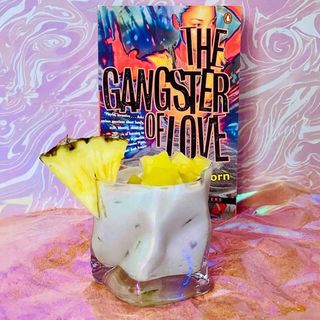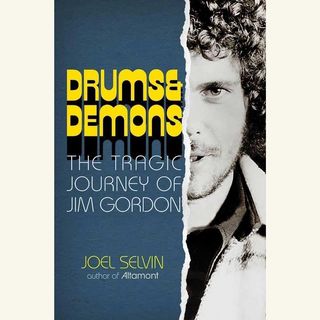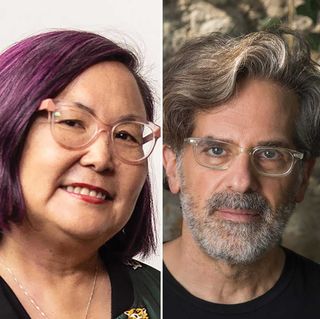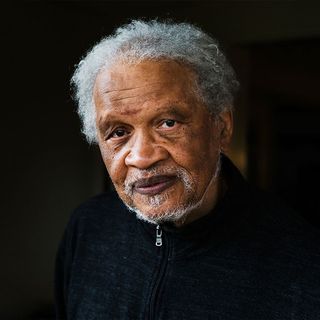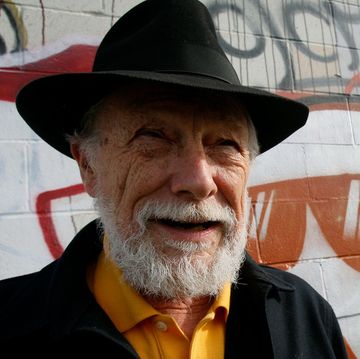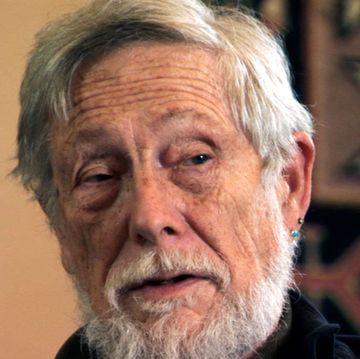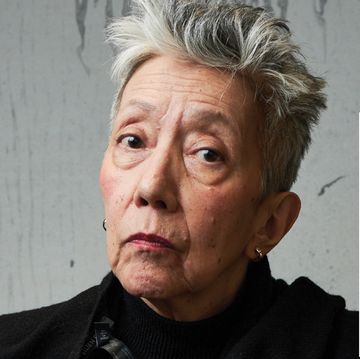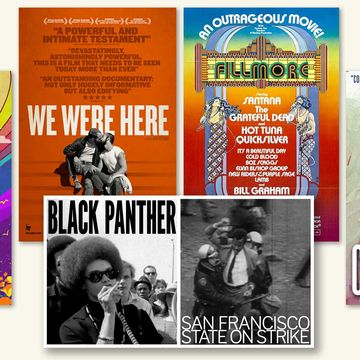Rizalina Ilagan was disappeared in the first months of the wet season, five years deep into martial law, on the same day that the Philippines’s First Lady and governor of Metro Manila praised the police for “the good work done.” In 1977, in the center of Makati, where the rain steeps the city in sheets and floods, she and nine others vanished, abducted one after the next under the military dictatorship of President Ferdinand Marcos. The Southern Tagalog 10, as they are collectively known, were students, artists, professors, and dissidents—each one organizing through education and art against authoritarianism. Rizalina had been involved with the theater troupe Panday Sining. On picket lines and basketball courts, outside churches and by flooded rice paddies, the group would perform plays drawn from the lives of those working in the factories and the fields, conceiving of themselves as activists and their art as protest.
When martial law was declared in 1972, Rizalina was driven underground, where she joined the revolutionary newsletter Kalatas. As the years stretched on, one atrocity into the next, a trickle of her companions began to disappear, and Rizalina suspected the remaining group was being watched. A new safe house was needed. In 1977, she wrote to her brother, Bonifacio Ilagan, an activist and cofounder of Panday Sining, and asked to meet. While Rizalina had been underground, Bonifacio had been a political prisoner, and once released, he remained under state surveillance. For her sake, he worried about their meeting, yet he missed his younger sister, his Rizalina, his sibling whose life was mirroring his own. Bonifacio promised to prepare a house.
“We set another date,” he says to me in Manila some 47 years after Rizalina’s disappearance.
“She did not come.”
I meet Bonifacio in early November 2023 under the shade of a lofty bodhi tree, the same sacred fig under which the Buddha is said to have attained enlightenment. It is the morning of All Souls Day, and Filipinos across the country are visiting family and paying their respects to the dead. Bonifacio, now a celebrated playwright, has joined dozens at Quezon City’s Bantayog ng mga Bayani, or monument to the heroes, for a gathering in memory of the desaparecidos. For the families of the disappeared, there is no grave to clean, no place for candles or flowers, no physical monument to a life extinguished.
All that is left is to remember.
One by one, beneath a canopy of heart-shaped leaves, friends, daughters, mothers, and brothers speak, pray, and plead. Some, like Bonifacio, who reads an open letter to the Philippines, have been doing so for most of their lives. Others, with fresh wounds, pause to wipe away tears as they describe loved ones abducted just months or weeks earlier under the new Marcos government.
In 2022, to the disbelief of martial law survivors, Ferdinand “Bongbong” Marcos Jr., son of the first Marcos, was elected president. While his predecessor, Rodrigo Duterte, preferred to stain the streets in blood through his so-called war on drugs, Bongbong performs diplomacy, harnessing misinformation to rewrite his family’s history and disappearing dissenters under a Duterte-era anti-terrorism law that empowers him to militarize the country without the need for martial law. Over the past four years, in a practice called red-tagging, activists, Indigenous peoples, union leaders, peasants, artists, and teachers have been publicly branded as terrorists, allowing the state to justify violence against its critics. History, as it does, has encircled itself. One tyrant becomes the next. A son becomes his father.
This reality underpins Dogeaters, Jessica Hagedorn’s 1990 debut novel of overlapping narrators and interconnected lives. Set in the Philippines, it is a story of Manila, martial law, and Marcos—the book’s great unnamed dictator. In the ambiguity produced by fictionalization, the novel’s Marcos and First Lady Imelda become symbols of how one despot and his kin may be echoed by the next. With the president’s policies carried out by a “Special Squadron” that includes the ruthless General Nicasio Ledesma, the book captures the undercurrent of violence and death that permeates everyday life under military control. When horrors are daily, weekly, and unceasing, brutality, both in fiction and in fact, becomes almost quotidian.
“What else do you do in that camp of yours?” a morbidly fascinated lover asks the expert torturer Ledesma.
Brutality is both a question and an answer.
Fifty years ago, Bonifacio was awoken by screams. “Raid! Raid!” yelled his friend, the journalist and activist Jose Lacaba. Armed men in plain clothes had stormed their home, kicking and beating the pair in a violent thrashing of rifle butts and gun barrels. It was 1974, the second year of martial law. Rizalina was underground, the military was ridding the country of dissidents, and Bonifacio, the left-wing activist and cultural worker, was arrested. Together with Lacaba, the two were brought to Camp Crame, a notorious detention center for political prisoners. They would remain there for two years, their internment marked by dogged cruelty.
Beatings with fists and boots. Vomiting blood. “San Juanico Bridge”—a form of torture named after a gift from Marcos to his First Lady. Endless squatting. A man called B. A scorching iron pressed to the soles of the feet. A violation of the body.
When Bonifacio was released in 1976, his testimony of torture was documented by Amnesty International in 1975. For a moment, he thought he would leave activism in the past, but the situation had only worsened. Then, Rizalina disappeared. There was no other choice. As Bonifacio and his family searched for Rizalina, they were met with the same government lie—she was a member of a terrorist group and had died in an armed encounter. Out of the Southern Tagalog 10, three bodies were found: one in a mass grave, two in a ravine, mutilated.
Rizalina Ilagan was never seen again.
Under martial law, the military called these extrajudicial killings “salvaging”—a euphemism that suggests salvation in death. Given the perverse and prolonged torture of political prisoners, perhaps there is some truth behind it, but the term also shows how the language of militarism can spin a gunshot wound into a scratch, a pool of blood into a can of spilled paint.
In Dogeaters, Hagedorn shows the language of obscuration through articles from the fictional newspaper the Metro Manila Daily. Owned by Severo Alacran, a loathsome oligarch, the newspaper leans on the words of military strongmen, like General Ledesma, to explain what is in plain sight. Arbitrary killings are “grossly exaggerated.” Protesting human rights violations creates an “atmosphere of hatred.” Headless bodies in the Makupit River are “unfortunate” only because housewives will no longer buy the fish caught in its depths. As we see today in the Philippines of Marcos Jr., when everyone is deemed a terrorist in the name of “law and order,” anyone can be a target.
But if there is some antidote to authoritarianism, a vein of resistance that cuts through the obscuration, it is art. Bonifacio and Rizalina, like many activists of the earlier Marcos era, used their theater work through Panday Sining to create a “literature of circumvention” that spoke truth to power. At the time, no protest was complete without activist theater—a form able to both mobilize resistance and dramatize rebellion. While many protest plays co-opted traditional forms and used symbolism to outwit censors while exposing truths, others were candid in their criticism.
Just two months after Rizalina’s disappearance, Bonifacio staged the play he wrote, Pagsambang Bayan—“People’s worship”—which he has described as a “daring anti-dictatorship liturgy.” Dedicated to his sister and her companions, the play was one of the first that challenged the military state under martial law, and when it was performed, it led to the arrest of the director and musical director. Beyond the Marcos years, Bonifacio’s work has continued to use art as a tool of protest, truth, and justice—even when the consequences have been severe. The bloody war on drugs became a theme for artists under former president Duterte, with many being vilified and red-tagged under anti-terrorism laws.
Bonifacio, too, has remained an enemy of the state.
Twenty years after his imprisonment at Camp Crame, Bonifacio was arrested once more and brought to a hotel room for interrogation and torture. The era of martial law and Marcos was long over, but under the presidency of Fidel V. Ramos, Bonifacio was still considered dangerous—and he is regarded as such today. In early January 2023, Bonifacio received a death threat over the phone. The man on the other end of the line said he was operating on orders from someone higher up. He warned Bonifacio, who continues to advocate against government terror, to stop what he was doing. Otherwise, the man said, even if Bonifacio begs, there’s nothing Bonifacio would be able to do.
“The more things change,” Bonifacio says. “The more they remain the same.”
At the Bantayog ng mga Bayani memorial, as the speeches, poems, and open letters come to a close, posters of the desaparecidos, their faces crowned with the word “SURFACE!,” are laid atop the moss-covered concrete floor. Those same friends, daughters, mothers, and brothers tiptoe between the patchwork to light candles and lay white chrysanthemums on the faces of their loved ones. Together the group shouts: “Bring back the victims of enforced disappearance!”
After the gathering has ended, family and friends of those recently disappeared join staff from the human rights organization Karapatan to talk, to debrief, and to plan what’s next—checking military bases, speaking with witnesses, campaigning for the desaparecidos until they secure some form of hard-won justice. Remembering, investigating, grieving, and advocating are part of the same sentence, part of the same scream.
“The best way to remember those who have fallen in the night is to continue the causes that emboldened them to forgo personal welfare, personal interest,” Bonifacio says. “No amount of state terrorism will be able to stop the movement.”
Near the shade of the bodhi trees, visible from the busy street and its row of tricycle drivers, is a black-granite wall engraved with the names of those killed and disappeared during martial law. Around eye level is “ILAGAN, Rizalina P.” Etched in gold, like the other 325 names, it beams in the soupy midday heat, the light raging against the darkness.•
Join us on April 18 at 5 p.m., when author Jessica Hagedorn will appear in conversation with California Book Club host John Freeman and a special guest to discuss The Gangster of Love. Register for the Zoom conversation here.
NOVEL COCKTAIL
Try out Lindsay Merbaum’s “booktail” for The Gangster of Love as you read or the night of the CBC event. —Alta
SHADOWS BEHIND A DRUM KIT
Critic Paul Wilner reviews veteran music journalist Joel Selvin’s Drums and Demons: The Tragic Journey of Jim Gordon about the legendary drummer who descended into mental illness and murdered his mother. —Alta
BOOKISH WEEKEND
Visit Alta Journal at booth #111 at the Los Angeles Times Festival of Books to meet California authors and get books signed. —Alta
BLACK BOHEMIAN LIFE
Read CBC selection panelist Lynell George’s stirring piece on Alison Mills Newman’s newly reissued novel, Francisco. —Alta
SATIRICAL THEATER
Alta Journal contributor, novelist, and poet Ishmael Reed’s play The Shine Challenge, 2024 will be screened and discussed on April 27 from 2:30 to 4:30 p.m. at the African American Museum and Library at Oakland. —Oakland Public Library
FORGING INTO NEW TERRITORIES
The 2024 Chowdhury Prize in Literature was awarded to novelist Hari Kunzru. Alta books editor David L. Ulin, who is also a prize administrator, called Kunzru’s books “rigorous and beautiful.”—USC Dornsife
Alta’s California Book Club email newsletter is published weekly. Sign up for free and you also will receive four custom-designed bookplates.
Alessandra Bergamin is a journalist who divides her time between Melbourne and Los Angeles and whose work focuses on the intersection of environmental conflict and human rights around the world. She has reported from many countries and has written for the Baffler, In These Times, Harper’s Magazine, National Geographic, thenewyorker.com, the Lily, and DAME Magazine, among others. She is a reporting fellow with the Leonard C. Goodman Institute for Investigative Reporting.

